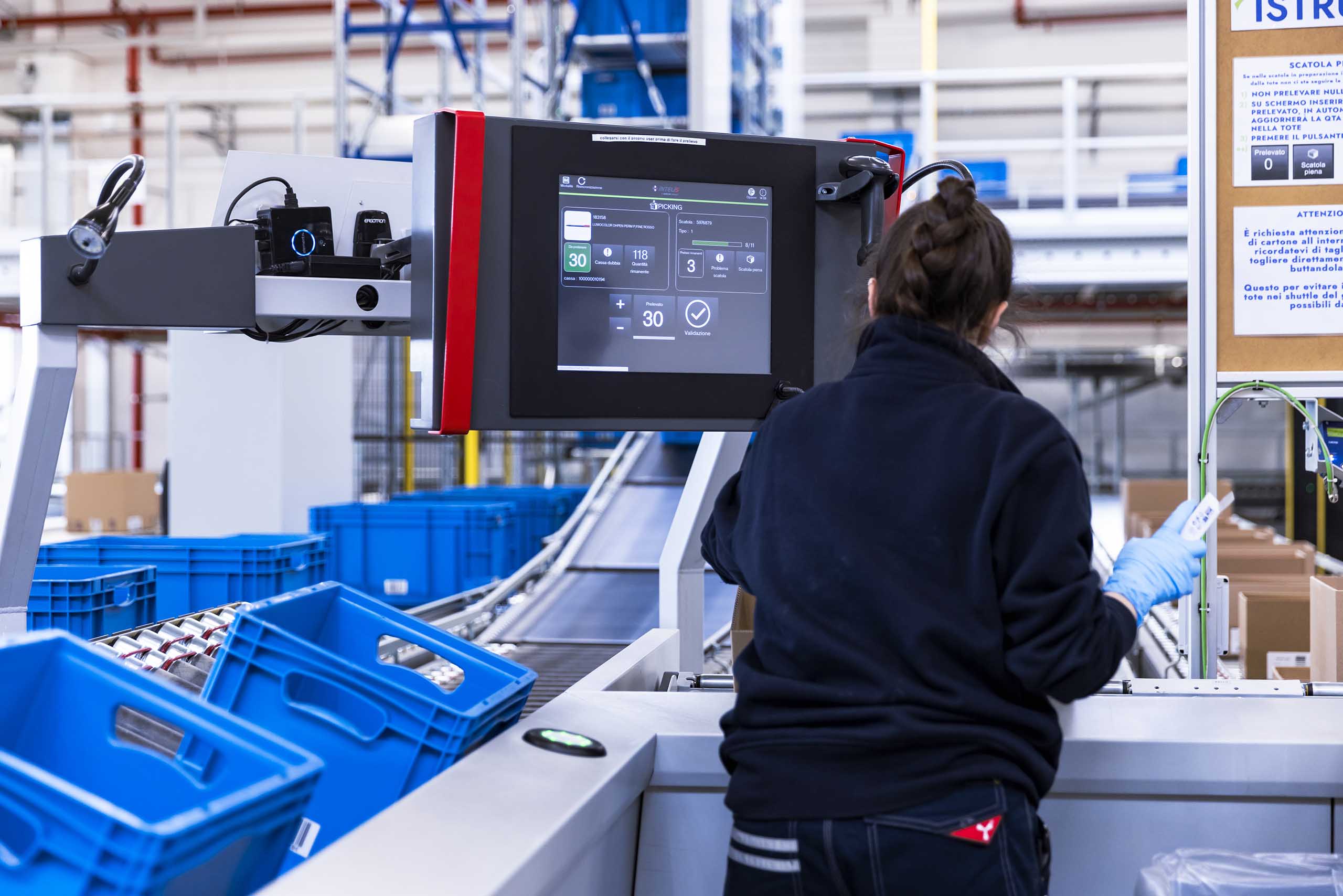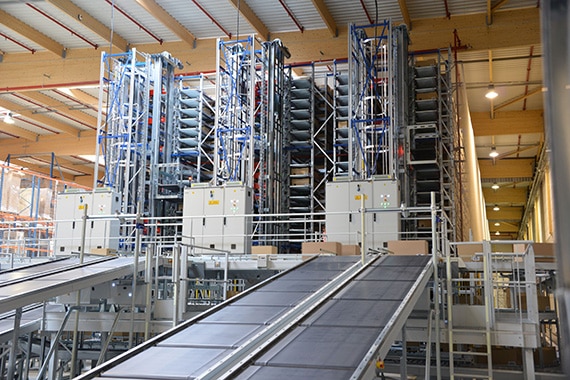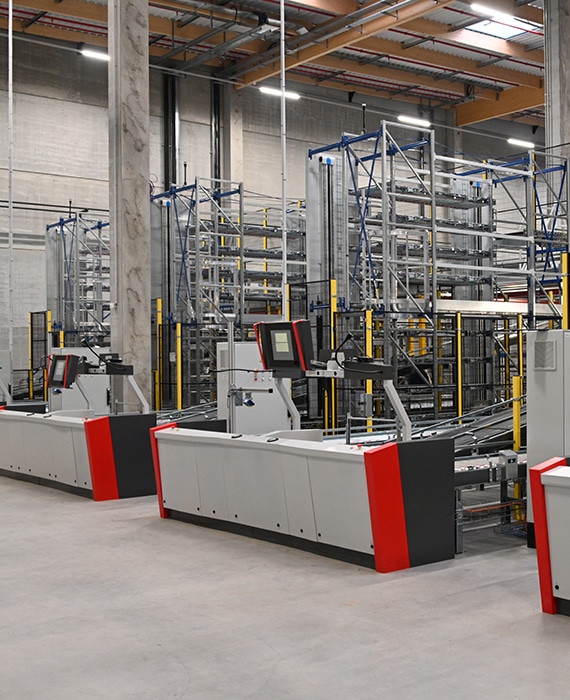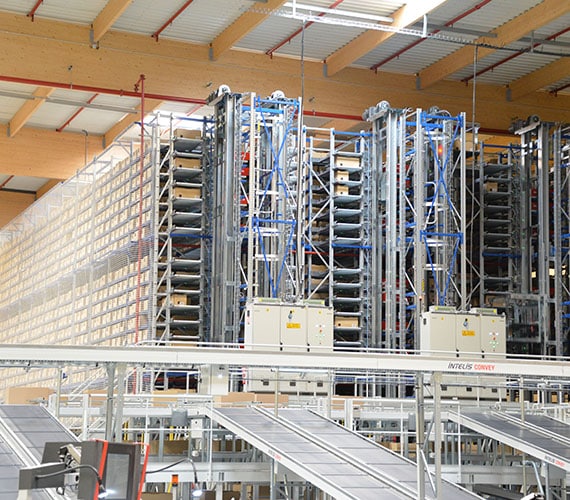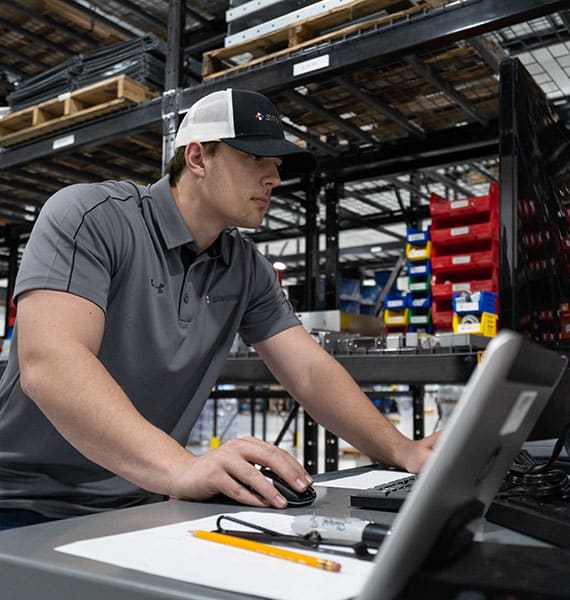02- HOW DOES THIS SOLUTION FIT INTO AN EXISTING PLATFORM OR WORK TOGETHER WITH OTHER PREPARATION PROCESSES?
The goods-to-person solution is very often used in addition to other order preparation processes, either manual or automated, that deal with SKUs which have very high or very low levels of turnover, or outsize products. It is therefore essential that the goods-to-person solution can be implemented in any situation:
• Possibility of integration either upstream or downstream of a compatible preparation process with a joint launch zone.
• With the possibility of sending packages directly from the preparation workstations.
03 – HOW REACTIVE IS THE SYSTEM?
The time that the system takes to react is measured from between the moment when the order is sent by the WMS or ERP and the start of the order preparation at the preparation workstation. The more reactive a system, the more it is equipped to deal with orders that are urgent and close to transporter leaving times, for single orders as well as batch orders.
04 – WHAT TYPE OF ORDERS IS IT SUITABLE FOR?
The goods-to-person solution must be able to deal with any type of order:
• Capable of dealing with orders from a low number of lines (4) as well as from a high number (10 +).
• Presence of an order treatment mechanism requiring the same product SKU, enabling a reduction in the number of movements for stored containers of this SKU. Please note that this mechanism can only be used if the goods-to-person solution is not installed downstream from an additional preparation process.

